Aloe Vera has scientifically proven medicinal features; growing problems can discourage avid gardeners with little time in hand. Just like many other garden plants When it comes to growing Aloe Vera, expect some challenges like general problems such as yellowing leaves, wobbly Aloe plants, and turning grey, among other Aloe plants.
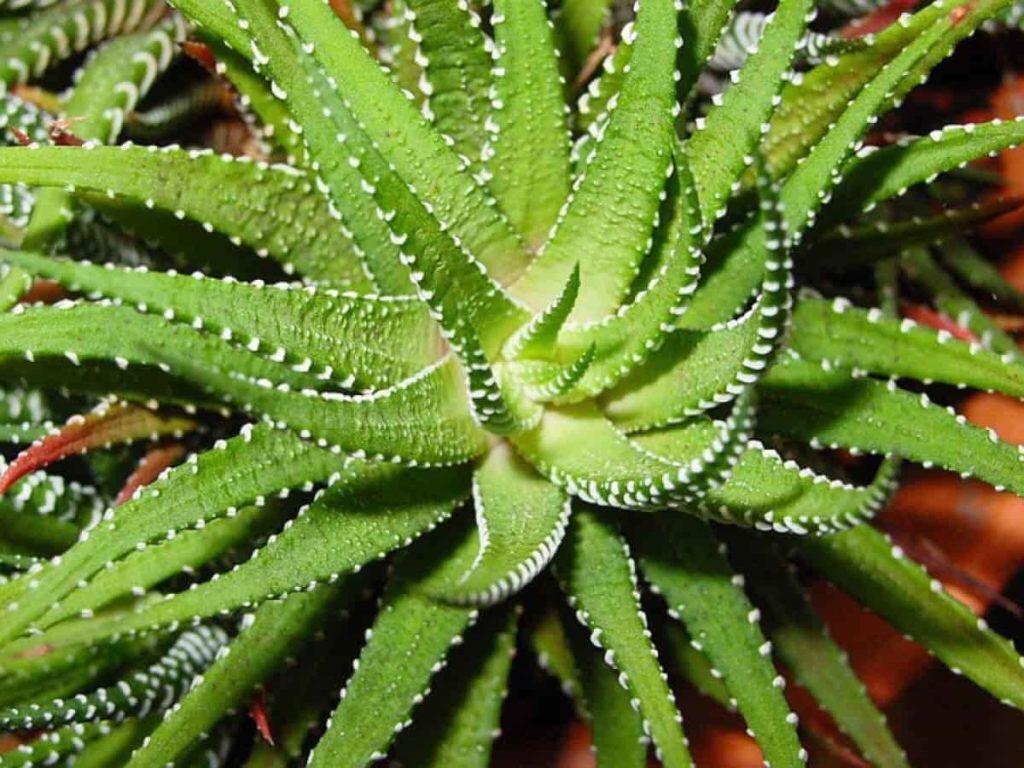
Some of these problems can occur naturally, while others may be because of how you care for your Aloe plants. Whatever the case, there is always a solution to every problem, and you need to understand the reasons and find a suitable solution.
Common Aloe Vera plant problems
Aloe Vera is turning brown and soft
There are many reasons for your Aloe Vera stalks being brown and soft. First and foremost, not too much water is good for the Aloe Vera plant. Always follow good water practices to maintain proper moisture levels in the soil and avoid rotting. The other cause of brown stalks on the Aloe Vera may be natural.
Solution – Whatever the case, you should cut brown tips from your Aloe plant with a disinfectant knife or pruning shear. It helps keep your Aloe Vera green and healthy.
Aloe Vera leaves turn flat, thin, and curly
Naturally, the leaves of the Aloe Vera should move upwards away from the base of the plant. If you have flat leaves, it can be due to insufficient light. At the same time, the Aloe plants turn brown with too much light. Thin and curly leaves on the Aloe Vera tell you that the soil has low moisture levels and your plants are dry.
Solution –Water your plants properly and always maintain a constant moisture level. To improve the health of Aloe Vera by giving at least 6 hours of sunlight daily.
Droopy Aloe Vera plant
It can be a lack of light, inappropriate water methods, a small pot, low temperature, or some fungal infection.
Solution – List all possible things that can interfere with the growing conditions of the Aloe and go through them one by one. If your potted Aloe is placed in a dark corner, it’s time to move it closer to a window that has enough sunlight. Let it soak in the sun for 6 hours every day, and you will see the leaves straightened and their healthy colors regaining.
If the room temperature is below 10°C, then this could be another reason why the leaves look sick. Move the plant to a warm place at home where temperatures constantly range between 15 to 23°C. Aloe loves to soak with water until it exits the drainage holes under the pot. Then let the soil dry before soaking again.
Aloe has a strong root system. Their root ball gets stronger over the years, so you must repot the plant. You can do this once every two years. It should be a good opportunity to repot the Aloe to inspect the roots for any fungal infection. Trim damaged or dead roots and used fresh, new soil.
In case you missed it: How to Prepare the Soil for Aloe Vera Plants: Best Soil Mix, pH, Compost, and Recipe

The Aloe Vera plant is not growing
The Aloe Vera stops growing in temperatures above 26°C during summer. The best temperature range for the growth of the Aloe Vera is between 12 to 23°C. The Aloe Vera stops growing in winter in reaction to low hours of light and low intensity of light.
Solution – The Aloe Vera stops growing in the summer as a water conservation strategy during drought and high temperatures and resumes growth next fall. Aloe Vera may also stop growing in response to winter’s low hours of light and cold temperatures. The Aloe Vera can grow very slowly and does not appear to grow if it is too shaded. Generally, Aloe prefers some direct sun for the best growth.
Excessive water and slow drainage soil can cause a lot of moisture around the roots to cause conditions that are contrary to the preferred cycle of Aloe Vera’s generous amount of water, and then the soil dries up. Large pots have a higher soil potential that can lead the Aloe Vera to grow leaves rather than establish its roots.
Cracked or torn Leaves
When cracks appear in the middle of the leaf, it is the result of the plant taking too much water. Unlike tropical species, they cannot get rid of excess water, and bursts are affected by the fungi spores turning brown/black.
Solution – Let the leaves dry or remove the infected leaves. Plant it in a gritter, rocky mix to prevent it from re-happening. Place powder sulfur on exposed areas.
Aloe Vera leaves are turning black
The Aloe Vera’s blackening indicates a serious care error, and the plant is under stress. Other factors such as improper water, dry air, fungal infections, contaminated soil, frostbites, and thrips attack can cause the Aloe to black.
Overwater
One of the common causes of Aloe-blackening is to water more. Giving more water keeps the soil unusually dumped, and roots start to rot.
Solution – Aloe is a plant from the desert so that it can avoid dehydration for a long time. If you find out that the soil is too wet or even soggy, keep your plant in a hot place, so the water evaporates quickly. When the condition is critical, you may have to trim down where it is black for normal live tissue. Completely cut off the affected root part.
Carefully check the root; it should be clean, without dark spots. Sprinkle the charcoal and dry a little. Then repot Aloe Vera in a new pot with a mix of soil with well drainage potential. Make sure your pot has drainage holes below. Water your Aloe from the bottom when the soil is completely dry.
Dehydration
Drying and blackening of leaves are signs of dehydration. The problem is less common for outdoor Aloe that benefits from rainwater. Your Aloe Vera needs more water in summer as the Aloe increases physical activity and growth during this period. Also, water evaporates rapidly due to temperatures.
Solution – Try to be consistent in your water to solve this problem. If the water dries up quickly due to direct sunlight, it may be necessary to revise where you placed your plant. Do not let your plant be thirsty for long periods during summer. Check the soil regularly if it is dry or not.
Dry air
Dry air is also a common cause of Aloe-tip and edge blackening.
Solution – You need to find a way to water your houseplants more frequently or moisten the air in your home. You can spray Aloe Vera to keep it cool. It helps a lot, but you have to do it often. Another simple and smart solution is a humidity tray or pebble tray. Using this tray, you don’t have to spray your Aloe too often.
This moisture tray will automatically control moisture around the plant. The tray steams the water and protects the plant from excessively dry air. Any flat container can act as a moisture tray. Just place some pebbles on a tray and pour water on it. Now place your Aloe plant on top of the pebble; the rest of the process is automatic.
In case you missed it: Growing Aloe Vera in Pots from Cuttings, Seed, Division
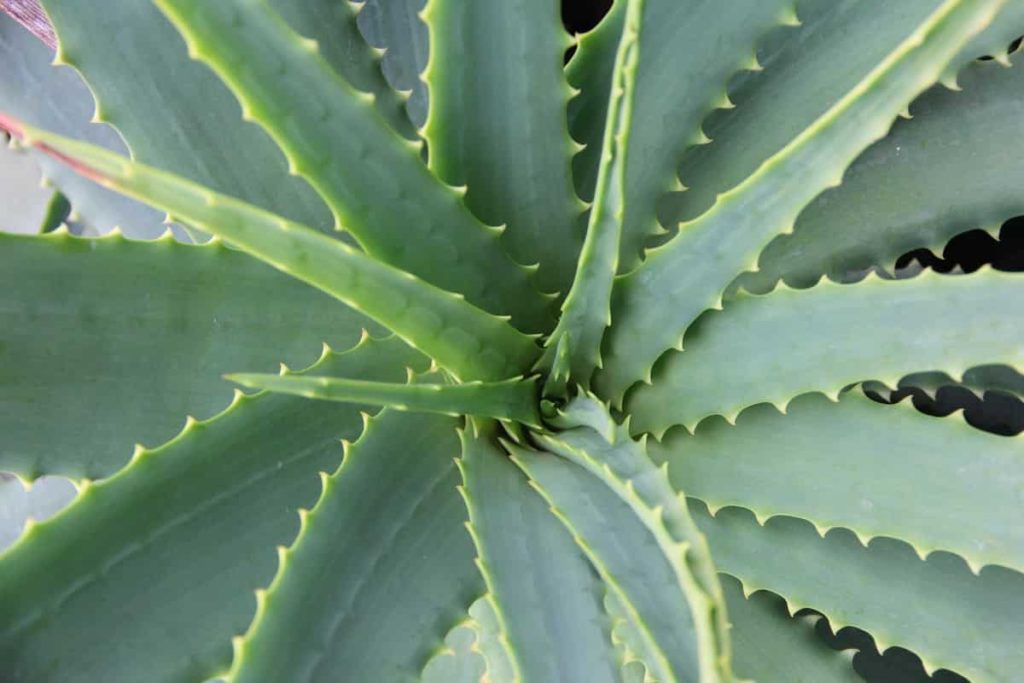
Aloe Vera leaf spot disease
You must take strict action if you see a black spot on any leaf because these spots will spread throughout the plant.
Solution – You can try to apply any fungicides available in the market. You should cut the affected leaf initially before spreading it throughout the plant. Cut all the leaves with black spot symptoms if the disease is severe. Don’t worry; new leaves will come out soon, and your Aloe will be fine.
Fertilizer burn
It is not good to feed too much for plants as well. If you over-fertilize your Aloe Vera plant, it shows signs like blackening the stems while staring through the root area.
Solution – If you find out early, you can solve the problem and solve your Aloe Vera without further damage. Prune the affected parts of the Aloe Vera plant. Fertilizer washes with water. So, wash the over-fertilized soil with too much water. Organic fertilizer can be a great solution. Because the high amount of organic fertilizer will not damage your Aloe. It’s getting slow, and Aloe Vera loves them.
Frostbites
The Aloe becomes dehydrated, and the cells die because of frostbites. And you will see that your Aloe Vera has turned black.
Solution – Bring your Aloe Vera inside the room when the temperature drops and keep it warm. It will need minimal water during winter as it is a plant’s rest period.
Thrips infection
These small insects suck the sap of your Aloe Vera and leave black dot marks of their presence.
Solution – You can control this insect with the water of the insecticidal soap. If the attack is severe, you may consider applying neem oil. It is better to prune out the parts of the affected plants. Also, natural beneficial pirate bugs do a great job against insect thrips.
No pups under Aloe Vera
One of the easiest ways to propagate Aloe is by using their offshoots. These small growths, called pups, these pups emerge on the base of mature plants. It will not produce pups if the plant is under stress, like going through a drought or not getting enough light.
Solution – Check the pot if the rim is wider than the diameter of the plant leaves, you need to repot it. Give the Aloe plenty of light and proper temperature, and refresh the soil whenever you repot it. And finally, only mature Aloe tends to grow pups. It can be very small if you don’t have pups in your plant.
In case you missed it: Growing Christmas Cactus Indoors – A Planting Guide
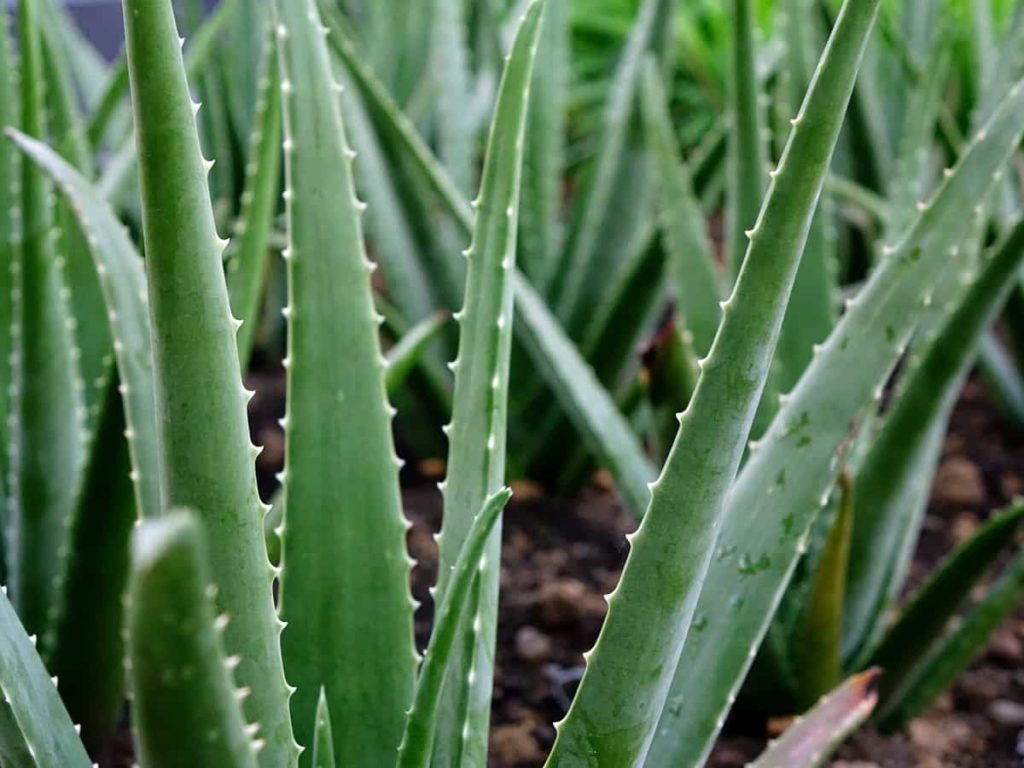
Wilting Aloe Vera
One of the key elements of having a healthy Aloe plant is to keep the soil dryer than wet. The wilted Aloe Vera results from overwatering plants or using the wrong growing medium. Exposure to harsh sunlight for long hours can also cause leaves to wilt. So, if you see your Aloe showing signs of distress, go through a list of causes and deal with them.
Solution – Inspect the leaves of the Aloe. If the leaves are brown, wilted, and have soft spots on the surface. These are signs of overwater. To improve drainage, you must repot Aloe and use a growing medium with more sand than soil. It’s never a good idea to over-fertilize the Aloe. The more fertilizer you throw into the pot, the more salt residue sits in the soil. Repot is the best way to save the plant and not fertilize it more than once a month.
Cold temperatures can put the succulent under enough stress to wilt. Ideally, you should keep room temperature between 15 to 22°C. The Aloe will be damaged if the temperature drops below 10°C. Aloe can survive in dim to medium light. Keep the potted plant away from the south or west-facing window.
Aloe Vera plant turning grey
The Aloe Vera plants turn grey when they are in shock. This is especially true when its atmosphere changes suddenly, like a tremendous increase in sunlight when moving out for the sun.
Solution – Although Aloe Vera plants can survive in the sun, you need to harden them before you put them out in the sun. You should slowly adapt to your Aloe plants by providing light shade adjustments before keeping them in the hot sun. Otherwise, you’ll end up with a sunburned Aloe Vera plant. However, keep your Sunburn Aloe plant in the shade for a few days to let it recover.
Diseases
Crown rot
If you observe your new leaves discoloring or soft, there is likely a bacterial and fungal infection. If the leaves are black, it is most likely that a fungal crown rot. Causes are more water or water from above.
Solution – Cut dead tissue and dust with an antifungal powder. Keep the remaining pieces as dry as possible until the area calluses are gone. A healthy stem can produce new heads after being kept in proper soil. Adjust water methods.
Stem rot
Young plants will represent stem discoloration (light brown), causing plants to fall while leaves are green.
Solution – Stem can be washed, dried, and placed on new soil to root. Remember to use aerated soil with proper drainage.
Root rot
When the Aloes appear dehydrated (even with wet soil) or the whole plant loosens without roots, it is likely to rot. The roots may look thin or dry depending on the age of the infection.
Solution – Remove dead tissue, wash the remaining plants, and dust with powdered fungicides. Let the plant dry for 7 to 10 days before placing it in new soil to root. Throw away the old soil.
Powdery mildew
Powdery mildew is a fungus whose shape is soft due to the morphology of fruity bodies. The leaves may appear as if it is covered in soft white foam.
Solution – A better place in terms of sun and airflow. Spread the least by covering the area with wet tissue paper and trapping spores before removing leaves. Treat infection with cinnamon or sulfur-based fungicides.
In case you missed it: 16 Common Banana Tree/Plant Problems: How to Fix Them, Solutions, and Treatment
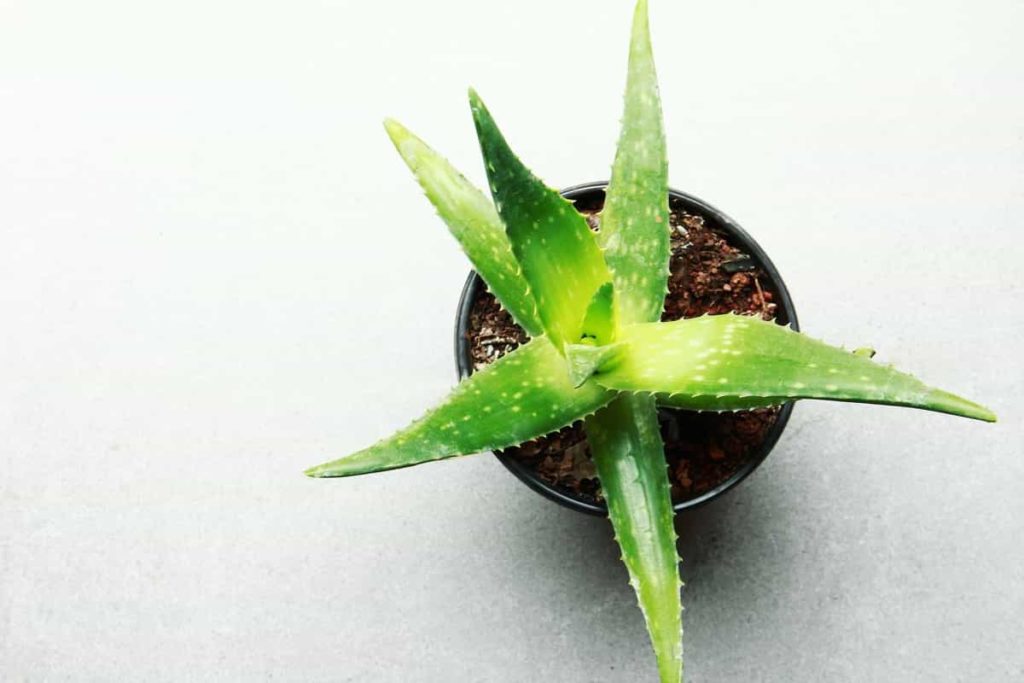
Aloe rust
Rust appears in the conjoined circles of bronze/orange on leaves.
Solution – Infected leaves need to be removed carefully. Any disturbance (through spray or similar vibration) will result in spores flying in the air, and more plants will be affected. To prevent spores from flying in the air, cover the affected area in wet tissue paper, cut leaves and throw the affected leaves into closed bags. Treat cut sites with powdered fungicides.
Pests
Spider mites
If you have their attack, you’ll see small, yellow markings on the surface of the Aloe leaves. Aloe doesn’t like these mites at all. Even flowers can be distorted as mites attack the emerging flower stalks.
Solution – These visible mites are easily controlled by spraying pesticides.
Red scale
The red scale is easily distinguished because the plant is covered with small fish scales.
Solution – You can treat it with pesticide; however, dead scales will still cling to the plant. You will have to wipe each leaf to remove the dead scales physically.
Aphids
The aphids are a problem in the flower season. If you have seen flower stalks develop and then stripped before flowering, it could be due to insect predation on the newly developed flower head.
Solution – You can remove the aphids with the hose or use a biocontrol agent such as an Aphidend or apply insecticide.
Snout beetle
Symptoms are white or off-white circles of 5-millimeter diameter. The larvae will be bored by leaving the grill in the plant because it eats.
Solution – Physically remove snout beetles or spray pesticide.
In case you missed it: 18 Common Rose Plant Problems: How to Fix Them, Solutions, and Treatment
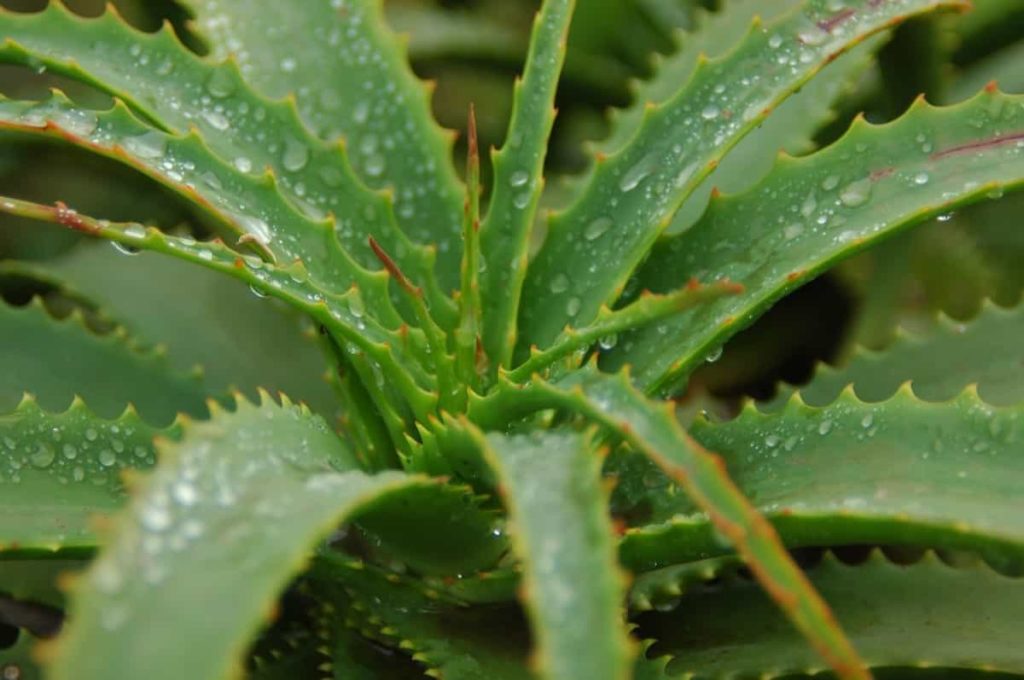
Whitefly
Leaves change color and then fall. Symptoms are similar to spider mites; white flies are easy to find because they grow up.
Solution – Some biocontrol agents and chromatic traps are available to prevent white flies.
Conclusion
Aloe is very easy to grow, and it is very forgiving. Your Aloe will grow with good light and not a lot of water. If your Aloe is bending, something’s not right. The good news is that there is possibly an easy fix. The propagation of Aloe is easy to root if done properly; they make huge gifts and will grow your garden, house, or patio throughout the year without dropping leaves anywhere.
- How to Grow Tomatoes Organically at Home: A Comprehensive Guide
- Organic Gardening on a Budget: Low-Cost Methods and Materials
- Gongura Seed Germination and Planting Methods
- Cabbage Seed Germination and Selection
- Broccoli Seed Germination and Selection
- Asparagus Seed Germination and Variety Selection
- Seasonal Flower Gardening: Best Practices for Spring, Summer, Fall, and Winter
- How to Grow Hibiscus from Flower
- Plantation Ideas for Home Decoration: A Beginners Guide
- Flower Garden Designs and Layouts for Beginners
- Planting and Spacing Techniques in Papaya: A Beginner’s Guide
- Growing Gold: Essential Techniques for Planting Pineapples
- How to Make Kalanchoe Plant Bushy: Home Remedies and Solutions
- 11 Reasons Why Your Gardenia is Not Blooming: Home Remedies and Solutions
- Eco Elegance: The Guide to Designing a Drought-Tolerant Landscape
- Gardening on a Slope: Strategies for Hillside Landscaping
- Nourish and Flourish: Top Organic Mulches for Thriving House Plants
- Everything You Want to Know about Indian Mogra Flower: Discover Uses and Growing
- Green Thumb Success: Expert Tips for Cultivating Greenhouse Pumpkins All Year Round
- Maximize Growth & Flavor: The Ultimate Guide to Companion Planting in Herb Gardens
- How to Control Rhododendron Problems Naturally: Home Remedies and Organic Ways to Fix Them
- Natural Magic: The Remarkable Benefits of Cinnamon for Plants
- Best Steps to Revive Dying Tulip with Natural and Organic Treatment
- 10 Reasons Why Your Angel Trumpet is Not Blooming: Remedies and Treatment
- How to Fix Periwinkle Leaf and Flower-Related Problems: Natural Remedies and Solutions
- How to Fix Zinnias Leaf and Flower Problems: Discover Natural and Home Remedies
- Organic Steps to Induce Lemon Tree Flowers: A Comprehensive Guide
- Bloom Booster: Crafting the Perfect Homemade Bougainvillea Fertilizer
- Optimizing Growth: A Guide to Applying NPK Fertilizer for Potted Plants
- 10 Best Homemade Fertilizers for Rubber Plant: DIY Recipes and Application Method
- How to Boost Female Pumpkin Flowers: Effective Steps for More Flowers and High Yields
- Transform Your Indoor Garden: Top Benefits of Pink Salt for Houseplants
- 10 Best Homemade Fertilizers for Peacock Plants (Calathea): Easy DIY Guide
- Unlock Blooms: 9 Reasons Why Your Potted Chrysanthemum is Not Blooming
- 8 Reasons Why Your Potted Hibiscus is Not Blooming: Fix it with Simple Solutions
- Unlock Blooms: 9 Key Reasons Your Potted Frangipani Won’t Flower